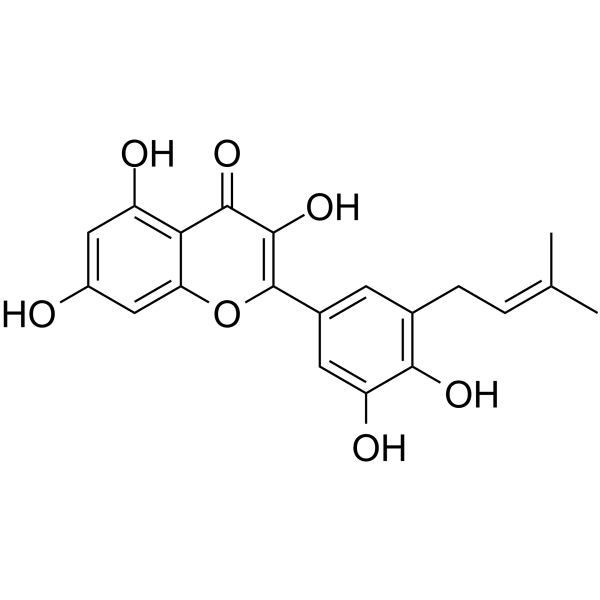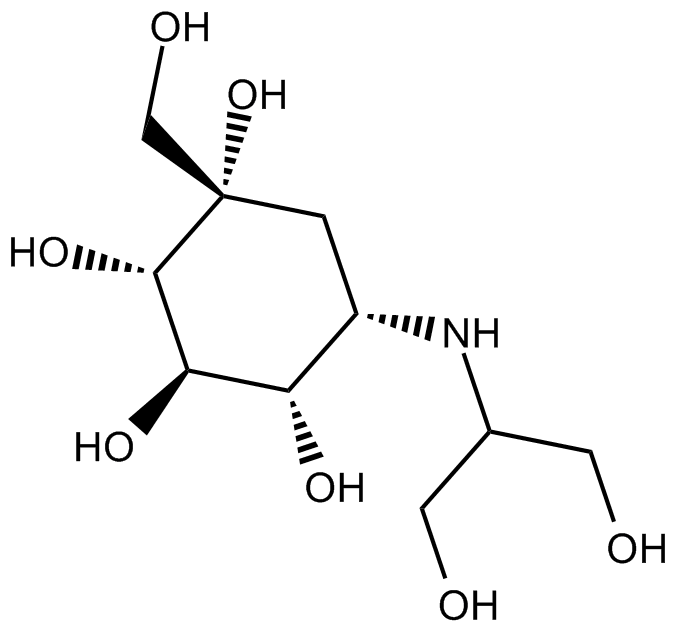Enzymes(酶)
Enzymes are very efficient and specific catalyst proteins which react with 1 or few types of substrates in biochemical reactions and are responsible for bringing about almost all of the chemical reactions in living organisms. Enzymes speed up reactions by providing an alternative reaction pathway of lower activation energy. Without enzymes, reactions take place at a rate far too slow for the pace of metabolism which means that they speed up the chemical reactions in living things.
There are 2 types of enzymes, ones that help join specific molecules together to form new molecules & others that help break specific molecules apart into separate molecules. Enzymes play many important roles ouside the cell as well. One of the best examples of this is the digestive system. For instance, it is enzymes in your digestive system that break food down in your digestive system break food down into small molecules that can be absorbed by the body. Some enzymes in your digestive system break down starch, some proteins and others break down fats. The enzymes used to digest our food are extra-cellular since they are located outside our cells & enzymes inside our cells are intra-cellular enzymes. Enzymes are used in ALL chemical reactions in living things; this includes respiration, photosynthesis, movement growth, getting rid of toxic chemicals in the liver and so on. Enzymes are proteins that must have the correct structure to be active. They are very easily affected by heat, pH and heavy metal ions.
Ribonucleoprotein enzyme catalytic activity is located in the protein part but for some the catalytic activity is in the RNA part. A catalyst is any substance which makes a chemical reaction go faster, without itself being changed. A catalyst can be used over and over again in a chemical reaction and does not get used up.
Enzymes lower the amount of activation energy needed by binding to the reactants of the reaction they catalyze, thus speed up the reaction and can process millions of molecules per second. Enzymes are typically large proteins with high molecular weight that permit reactions to go at conditions that the body can tolerate.
Enzyme nomenclature is based on what the enzyme reacts with & how it reacts along with the ending ase.
Enzymes must get over the activation energy hurdle.
Enzymes change how a reaction will proceed which reduces the activation energy and makes it faster. The more we increase the enzyme concentration the faster the reaction rate for non-catalyzed reactions. Enzymes that are catalyzed reactions also increase reaction rate at higher level of concentration but up to a certain point called Vmax which means that the enzyme has reached its maximum point. The reaction is limited by both the concentrations of the enzyme and substrate. Enzymes as catalysts take part in reactions which provide an alternative reaction pathway. Enzymes do not undergo permanent changes and remain unchanged at the end of the reaction. They only change the rate of reaction, not the position of the equilibrium.Enzymes as catalysts are highly selective by only catalysing specific reactions due to the shapes of the enzyme’s molecule.
Enzymes contain a globular protein part called apoenzyme and a non-protein part named cofactor or prosthetic group or metal-ion-activator. Changes in temperature and pH have great influence on the intra- and intermolecular bonds that hold the protein part in their secondary and tertiary structures.
Examples of cofactors are 1. Prosthetic group that are permanently bound to the enzyme. 2. Activator group which are cations (positively charged metal ions) & temporarily bind to the active site of the enzyme. 3.Coenzymes, usually vitamins or made from vitamins which are not permanently bound to the enzyme molecule, but combine with the enzyme-substrate complex temporarily. Enzymes require the presence cofactors before their catalytic activity can be exerted. This entire active complex is referred to as the holoenzyme.
Without enzymes, our guts would take weeks to digest our food, our muscles, nerves and bones would not work properly and so on…
Main Enzyme category groups:
Oxidoreductases:
All enzymes that catalyse oxido-reductions belong in this class. The substrate oxidized is regarded as a hydrogen or electron donor. The classification is based on 'donor:acceptor oxidoreductase'. The common name is 'dehydrogenase', wherever this is possible; as an alternative, 'acceptor reductase' can be used. 'Oxidase' is used only where O2 is an acceptor. Classification is difficult in some cases, because of the lack of specificity towards the acceptor.
Transferases:
Transferases are enzymes that transfer a group, for example, the methyl group or a glycosyl group, from one compound (generally regarded as donor) to another compound (generally regarded as acceptor). The classification is based on the scheme 'donor:acceptor grouptransferase'. The common names are normally formed as 'acceptor grouptransferase' or 'donor grouptransferase'. In many cases, the donor is a cofactor (coenzyme) that carries the group to be transferred. The aminotransferases constitute a special case.
Hydrolases:
These enzymes catalyse the hydrolysis of various bonds. Some of these enzymes pose problems because they have a very wide specificity, and it is not easy to decide if two preparations described by different authors are the same, or if they should be listed under different entries. While the systematic name always includes 'hydrolase', the common name is, in most cases, formed by the name of the substrate with the suffix -ase. It is understood that the name of the substrate with this suffix, and no other indicator, means a hydrolytic enzyme. It should be noted that peptidases have recommended names rather than common names.
Lyases:
Lyases are enzymes that cleave C-C, C-O, C-N and other bonds by means other than by hydrolysis or oxidation. They differ from other enzymes in that two (or more) substrates are involved in one reaction direction, but there is one compound fewer in the other direction. When acting on the single substrate, a molecule is eliminated and this generates either a new double bond or a new ring. The systematic name is formed according to 'substrate group-lyase'. In common names, expressions like decarboxylase, aldolase, etc. are used. 'Dehydratase' is used for those enzymes that eliminate water. In cases where the reverse reaction is the more important, or the only one to be demonstrated, 'synthase' may be used in the name.
Ligases:
Ligases are enzymes that catalyse the joining of two molecules with concomitant hydrolysis of the diphosphate bond in ATP or a similar triphosphate. 'Ligase' is often used for the common name, but, in a few cases, 'synthase' or 'carboxylase' is used. 'Synthetase' may be used in place of 'synthase' for enzymes in this class.
Products for Enzymes
- 41701(11)
- Activating Transcription Factor(3)
- Adenylate Kinase(10)
- AHCY(3)
- Aldolase(9)
- Asparaginase(5)
- Aurora Kinase(18)
- Beta Lactamase(3)
- Calcium and Integrin Binding(2)
- Calcium/Calmodulin-Dependent Protein Kinase(4)
- Carbonic Anhydrase(49)
- Casein Kinase(36)
- Cathepsin(52)
- Chitinase(5)
- Creatin Kinases(9)
- Cyclin(7)
- Cyclin-Dependent Kinase(18)
- Cyclophilin(23)
- Deaminase(14)
- Decarboxylase(12)
- Dehydrogenase(96)
- Discoidin Domain Receptor Tyrosine Kinase(2)
- DNA Polymerase(4)
- EGF Receptor(3)
- Endonuclease(6)
- Enolase(10)
- Enterokinase(5)
- Epimerase(3)
- Esterase(15)
- FGF Receptors(12)
- FK506 Binding Protein(10)
- Fructosamine 3 Kinase(2)
- Galactosidase(5)
- Glucosidase(32)
- Gluteradoxin(7)
- Glycogen synthase kinase(2)
- Glycosylase(10)
- Glyoxalase(3)
- Granzyme(7)
- Guanylate Kinase(2)
- Heparanase(2)
- Histone Deacetylase(3)
- Hydratase(10)
- Hydrolase(33)
- Hydroxylase(6)
- Isomerase(26)
- Jun N-terminal Kinase(1)
- Jun Proto-Oncogene(2)
- Kallikrein(26)
- Ligase(4)
- Lipase(14)
- Lipocalin(6)
- Lyase(9)
- LYVE1(3)
- Mitogen-Activated Protein Kinase(16)
- MMP(68)
- Mutase(11)
- Natural Enzymes(4)
- Nuclease(18)
- Nucleotidase(4)
- Nudix Type Motif(11)
- Other Enzymes(63)
- Oxidase(23)
- Oxygenase(12)
- Paraoxonase(3)
- Peptidase(41)
- Peroxiredoxin(10)
- Phosphatase(150)
- Phosphorylase(9)
- PI3-kinase(5)
- Polymerase(13)
- PPARG(2)
- Protease(15)
- Proteasome(54)
- Protein Kinase Akt1/PKB alpha(4)
- Protein Kinase-A(7)
- Protein Kinase-C(3)
- Protein Kinases(86)
- Protein Tyrosine Phosphatase(10)
- Reductase(60)
- Secreted Phospholipase A2(10)
- Serine Threonine Kinase(4)
- Sulfatase(8)
- Synthase(23)
- Synthetase(33)
- TGFBR(3)
- TGM2(3)
- TIMP(10)
- TPA(4)
- Transferase(156)
- Tyrosine Kinase(9)
- Ubiquitin Conjugating Enzyme(39)
- Uromodulin(4)
- VEGF Receptors(14)
- Transaminase(19)
- Hexokinase(6)
- TIE1(6)
- Cat.No. 产品名称 Information
-
GP22362
UBE2L3 Human His
Ubiquitin-Conjugating Enzyme E2L 3 Human Recombinant, His Tag

-
GP22363
UBE2L6 Human
Ubiquitin Conjugating Enzyme E2L 6 Human Recombinant

-
GP22364
UBE2M Human
Ubiquitin Conjugating Enzyme E2M Human Recombinant

-
GP22365
UBE2Q2 Human
Ubiquitin Conjugating Enzyme E2Q2 Human Recombinant

-
GP22366
UBE2R2 Human
Ubiquitin Conjugating Enzyme E2R 2 Human Recombinant

-
GP22367
UBE2S Human
Ubiquitin Conjugating Enzyme E2S Human Recombinant

-
GP22368
UBE2T Human
Ubiquitin-Conjugating Enzyme E2T Human Recombinant

-
GP22369
UBE2V2 Human
Ubiquitin-Conjugating Enzyme E2 Variant 2 Human Recombinant

-
GP22370
UBE2W Human
Ubiquitin Conjugating Enzyme E2W Human Recombinant

-
GP22371
UBE2Z Human
Ubiquitin Conjugating Enzyme E2Z Human Recombinant

-
GP22372
UCHL3 Human
Ubiquitin Carboxyl-Terminal Esterase L3 Human Recombinant

-
GP22373
UCHL3 Mouse
Ubiquitin Carboxyl-Terminal Esterase L3 Mouse Recombinant

-
GP22374
UCHL5 Human
Ubiquitin Carboxyl-Terminal Esterase L5 Human Recombinant

-
GP22648
UCK1 Human
Uridine-Cytidine Kinase 1 Human Recombinant

-
GP22649
UCK2 Human
Uridine-Cytidine Kinase 2 Human Recombinant

-
GP22375
UFC1 Human
Ubiquitin Fold Modifier Conjugating Enzyme 1 Human Recombinant

-
GP22377
UGDH Human
UDP-Glucose Dehydrogenase Human Recombinant

-
GP22378
UGDH Mouse
UDP-Glucose Dehydrogenase Mouse Recombinant

-
GP22380
UGP2 Human
UDP-Glucose Pyrophosphorylase 2 Human Recombinant

-
GP22376
UGT1A1 Human
UDP Glucuronosyltransferase 1 Family Polypeptide A1 Human Recombinant

-
GP22379
UGT8 Human
UDP Glycosyltransferase 8 Human Recombinant

-
GP22382
UMOD Canine
Uromodulin Canine

-
GP22383
UMOD Feline
Uromodulin Feline

-
GP22381
UMOD Human
Uromodulin Human

-
GP22384
UMOD Porcine
Uromodulin Porcine

-
GP22385
UMPS Human
Uridine Monophosphate Synthetase Human Recombinant

-
GP22386
UMPS Human, Sf9
Uridine Monophosphate Synthetase Human Recombinant, Sf9

-
GP22387
UNG
Uracil DNA Glycosilase

-
GP22388
UNG E.Coli
Uracil DNA Glycosylase E.Coli Recombinant

-
GP22391
UPP1 E.coli
Uridine Phosphorylase E.coli Recombinant

-
GP22389
UPP1 Human
Uridine Phosphorylase 1 Human Recombinant

-
GP22390
UPP1 Salmonella
Uridine Phosphorylase Salmonella Typhimurium Recombinant

-
GP22392
UPRT Human
Uracil Phosphoribosyltransferase Human Recombinant

-
GC70095
Uralenol
乌拉尔醇
Uralenol 是来自 Broussonetia papyrifera 的天然 PTP1B 抑制剂 (IC50=21. 5 μM)。 在许多细胞和生化研究中,PTP1B 已显示在胰岛素受体的去磷酸化中起主要作用。
-
GP22394
Urease
Urease Recombinant

-
GP22395
Uricase
Urate Oxidase Recombinant

-
GP22396
UROD Human
Uroporphyrinogen Decarboxylase Human Recombinant

-
GP22398
Urokinase
Urokinase Human Recombinant

-
GP22397
Urokinase Human
Urokinase Human

-
GP22399
UROS Human
Uroporphyrinogen III Synthase Human Recombinant

-
GP22651
VEGFR2 Fc Human
Vascular Endothelial Growth Factor Receptor-2 Fc Chimera Human Recombinant

-
GP22650
VEGFR2 Human
Vascular Endothelial Growth Factor Receptor-2 Human Recombinant

-
GP22652
VEGFR2 Human, His
Vascular Endothelial Growth Factor receptor-2 Human Recombinant, His Tag

-
GC68437
Vimentin-IN-1
Vimentin-IN-1 是 FiVe1 衍生物,是一种口服有效的选择性抗癌剂。FiVe1 能够结合 III 型中间丝蛋白 vimentin (VIM),诱导 Ser56 过度磷酸化,导致有丝分裂的选择性中断和转化表达 VIM 的间充质癌细胞的多核化。Vimentin-IN-1 比 FiVe1 表现出更好的口服利用度和药代动力学特征。

-
GC18007
Voglibose
伏格列波糖
An α-glucosidase inhibitor
-
GP22400
WARS Human
Tryptophanyl-tRNA Synthetase Human Recombinant

-
GP26182
Welqut Protease
Welqut Protease Recombinant is a single, non-glycosylated polypeptide chain containing 204 amino acids and having a molecular mass of 22kDa

-
GP26183
Welqut Protease, His
Welqut Protease Recombinant is a single, non-glycosylated polypeptide chain containing 210 amino acids and having a molecular mass of 22kDa

-
GP22401
WWOX Human
WW Domain Containing Oxidoreductase Human Recombinant

-
GP22402
XPNPEP1 Human
X-Prolyl Aminopeptidase-1 Human Recombinant





